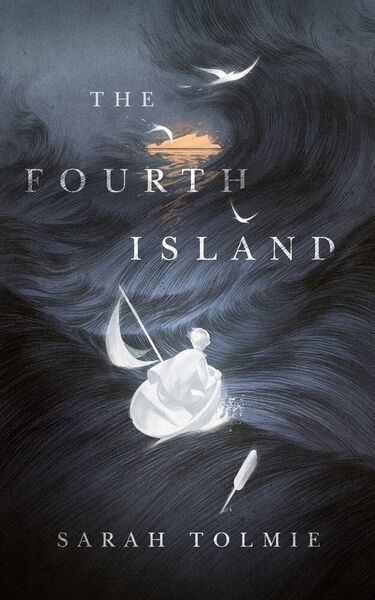No Colours Anymore
The Fourth Island
By Sarah Tolmie

16 Jan, 2025
Sarah Tolmie’s The Fourth Island is a stand-alone historical fantasy novella.
Drowned men are no novelty on the island of Inis Mór1. What made this corpse unusual was the clothing it was wearing.
The sweater the dead man is wearing is handmade. Each handmade sweater is unique; their patterns identify their makers. However, just as the dead man looks like he could be kin to the people of Inis Mór, Inis Meáin, and Inis Oírr, but is unfamiliar to all, the sweater was clearly the product of the local knitting culture and yet is by no known woman’s hand.
The mystery is enough for old Aoife to preserve the mysterious sweater despite custom dictating that it be buried with its unfortunate owner. Women from of Inis Mór, Inis Meáin, and Inis Oírr all visit the old woman to examine the sweater. Who knitted the sweater remains a mystery.
Years pass. Aoife dies of old age. Dirty Nellie, the local mute, commandeers the sweater and Aoife’s hut. One day, Nellie vanishes as well, another mystery the islanders will never solve.
Jim Conneely takes his boat out to sea but does not return. At least, he does not return alive. A year after he vanished at sea, Jim’s corpse — just a few days dead — washes up on shore, dressed in a sweater just like the first sweater, knit by an unknown hand. If corpses could speak, Jim could solve several mysteries — where he spent that missing year, what happened to Nellie, and who made the sweaters — but of course, dead men don’t speak.
Some of them, however, bring contagion. In Jim’s case, one that the islanders are ill-suited to defend against.
~oOo~
Professor Sarah Tolmie teaches at University of Waterloo2, one of my employers. In fact, we sometimes work in the same building, Hagey Hall. However, I somehow missed that she’s now a full professor. Go, Professor Tolmie!
Those parts of the novel that could be said to have a period are set in the 19th century, when Ireland was still ruled by England but in the case of these particular islands, somewhat at a distance. The islands were not so fortunate in the Cromwellian era, when the English established a prison camp for priests on Inishmore.
As it happens, in the year Jim goes missing the Great Potato Famine is only about five years away. It is only four years away when his body washes up on shore. I need a nice concise term for “novels set in a period immediately before everything goes to crap.” I think I might get a lot of use out of it, whether for books set before the Famine, manga set in Central Asia just before the Great Game kicks into full gear, or novels set in Canada in 2024.
There is some explanation for what’s going on, but it’s limited: just the phenomena are described. The ultimate cause remains mysterious; how and what is clear, at least to some, but why is not. Don’t go into this book expecting a Poul Anderson-esque reveal. What we get is closer to the wise men and the elephant; everyone sees a different aspect. I’m being deliberately vague here, as the reading experience is one best entered with as little preparation as possible.
Readers will want to have gloomy music playing for this novella. Even taking into account the fact that the author is Canadian, this skillfully told tale features a lot of death and melancholy. However, it is not all death and melancholy. There are happy moments, a fair number of them in fact… just not on Inis Mór.
The Fourth Island is available here (Amazon US), here (Amazon Canada), here (Amazon UK), here (Barnes & Noble), here (Chapters-Indigo), and here (Words Worth Books).
I didn’t find The Fourth Island at Apple Books or rather, I thought I did, but the link would not open so I am counting that as not found.
1: Inis Mór was already in my default dictionary but the other two islands were not. The ways of Word are beyond mortal understanding.
2: Speculative fiction creators are not a recent phenomenon at UW, with examples going back at least as far as Thomas J. Ryan and Edward Llewellyn. In fact, three of last year’s Canadian Science Fiction and Fantasy Association Hall of Fame nominees (one of whom was inducted) are affiliated with UW.
